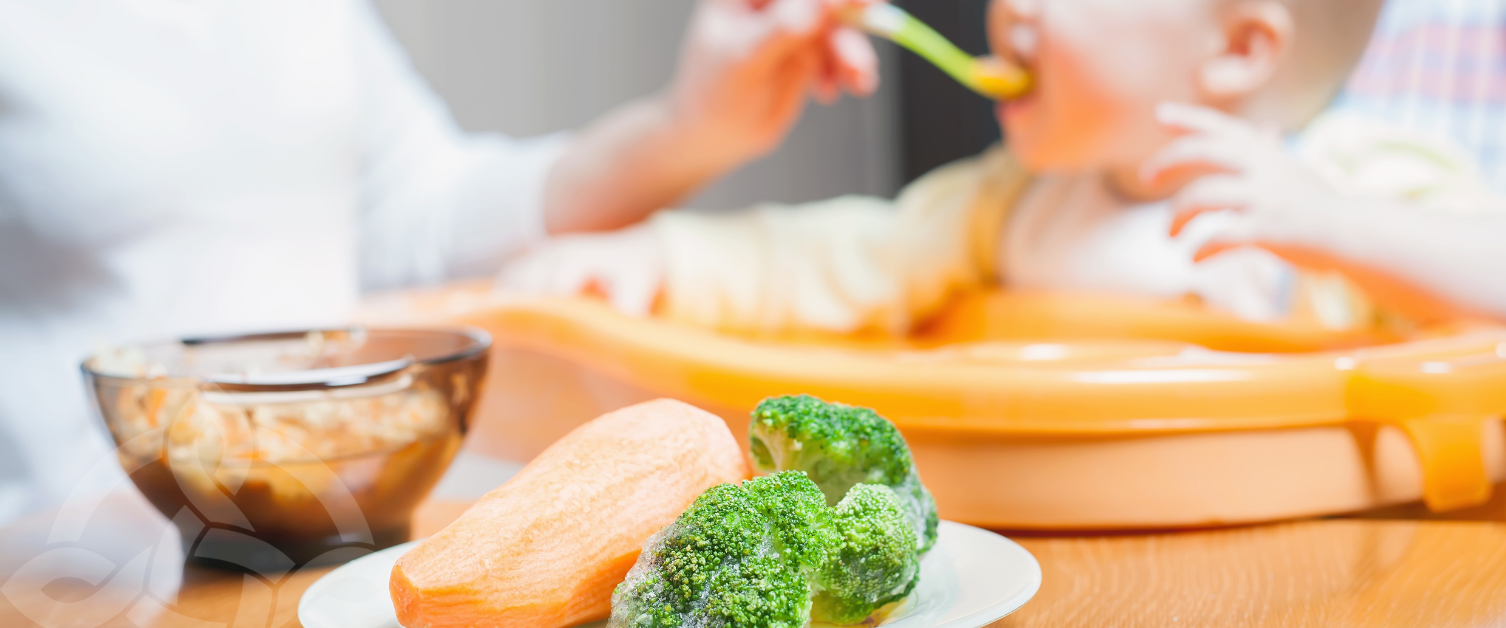How much food to give your baby

The aim of first foods is to help babies explore new tastes and textures. Every baby will be different; some will enjoy food from the beginning and will help themselves to food straight away.
- Some may manage several spoons of newly introduced foods.
- Some will take longer to get used to new tastes.
- Offer small amounts of food before milk feeds at mealtimes.
- The amount of food can be slowly increased over the first few weeks.
It is important not to worry about portion sizes at this age because:
- There will be mess.
- It’s normal for your baby's food intake to vary from day to day, and that appetites can vary.
- Trust your baby to take what they need, and aim to establish a regular meal pattern.
- Offer meals or snacks regularly every 2 - 3 hours by the time your baby is 12 months old.
More information and advice on feeding your baby can be found on the British Dietetic website - Complementary feeding (weaning) | British Dietetic Association (BDA).
From 6 months
At around 6 months, there is less focus on portions or amounts of food but instead an opportunity to introduce new tastes and textures. Aim to provide a good variety of flavours to help your baby accept new foods later in life.
Offer simple and unprocessed foods basing meals around natural and minimally processed foods. Allow your baby to touch the foods they are offered and make eating a happy event. Include your baby in mealtimes with others whenever you can so that they learn by observing others.
Every baby will be different; some will enjoy food from the beginning and will help themselves to food straight away. Some will manage several spoonful’s from the beginning whilst others take longer to accept new tastes.
At this age, breastmilk or first infant formula provides the majority of the energy and nutrients that your baby needs. The amount of food will be increased gradually over the first few weeks.
7 - 9 months
By this age you will probably have noticed that your baby automatically drinks less milk as the amount of food they eat increases. Your baby should be eating a range of mashed or finely chopped foods as well as some finger foods.
Finger foods should be soft so that babies can start to bite pieces of food in their mouth.
Again, try not to worry about portion sizes at this age. Continue to offer a variety of simple and unprocessed foods. Never force your baby to eat, babies need to learn to eat as they do for other areas of development and it takes time. A small bowl with a width of about 12cm and depth of 4cm is large enough to serve meals for babies at this age.
Aim to offer breakfast, lunch and evening meal or tea followed by breastmilk of first infant formula to establish a regular mealtime routine.
10 - 12 months
By this age your baby will be managing a ranged of minced and chopped foods and should be offered 3 meals a day. Regular breastfeeds or drinks of baby’s usual milk around 3 times a day will also continue after or between meals.
The appetite of babies does vary as does their energy needs. It is advisable to encourage your baby to eat to appetite and continue to offer an increasing amount of food and colours as your baby grows so that their nutritional needs are met. Continue to offer a wide range of tastes, textures and colours.
The range of finger foods that can be offered at this age is much greater and can include crunchy and chewy foods as well as soft foods. Continuing to use a small bowl or small tea plate to ensure that you are not offering portions that are too large.
For more information on portion sizes and amounts to offer your baby in the first year, you may wish to look at this downloadable resource: Eating well in the first year — First Steps Nutrition Trust
Useful information and resources
- Information on feeding your baby and introducing solid foods - Complementary feeding (weaning) | British Dietetic Association (BDA).
- Downloadable resource on portion sizes and amounts - Eating well in the first year — First Steps Nutrition Trust.
- Parent information resources - Parent Information Resources | Every Child (everychildwales.co.uk).